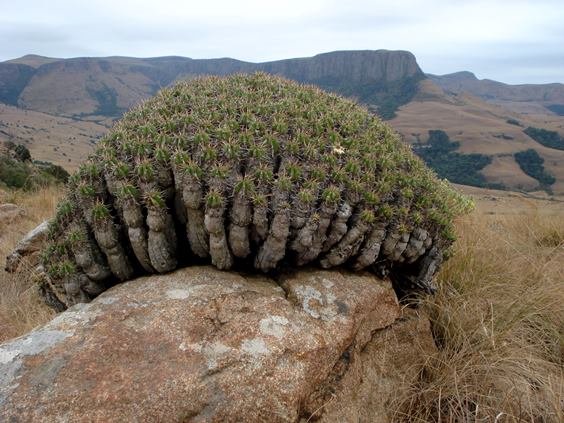Euphorbia pulvinata revealing some stems

Author: Ivan Lätti
Photographer: Judd Kirkel Welwitch
The stems of Euphorbia pulvinata, usually hidden, appear like tortoise limbs when exposed like this. The plant edges normally creep, adhering closely to flat rock, the perimeter stem-tips hugging the surface as they do on open ground.
One plant may consist of several thousand very similar stem-tips developed over many years, although different plants may grow together and merge in appearance, covering a few square meters. This may make it difficult to determine where one plant ends and the next begins; each plant growing branches from a single, central stem and root system.
The specific name, pulvinata, is derived from the Latin word, pulvinus, meaning cushion or pillow, referring to the mound-shape achieved by the multitude of stem-tips over time.
All parts of E. pulvinata exude a milky latex when the surface is damaged. This white sap should be avoided due to its toxicity (Frandsen, 2017; Smith, et al, 2017; Pooley, 1998; iNaturalist; http://www.llifle.com; https://www.plantbook.co.za; https://worldofsucculents.com).

